-
 Bitcoin
Bitcoin $83,407.2371
-1.63% -
 Ethereum
Ethereum $1,823.1395
-3.06% -
 Tether USDt
Tether USDt $0.9997
-0.02% -
 XRP
XRP $2.0473
-2.23% -
 BNB
BNB $600.1100
-0.49% -
 Solana
Solana $119.7021
-3.88% -
 USDC
USDC $0.9998
-0.01% -
 Dogecoin
Dogecoin $0.1648
-3.39% -
 Cardano
Cardano $0.6519
-2.39% -
 TRON
TRON $0.2368
-0.66% -
 Toncoin
Toncoin $3.8129
-4.99% -
 UNUS SED LEO
UNUS SED LEO $9.3898
-0.23% -
 Chainlink
Chainlink $13.1549
-4.15% -
 Stellar
Stellar $0.2637
-1.07% -
 Sui
Sui $2.4035
1.65% -
 Avalanche
Avalanche $18.5674
-3.45% -
 Shiba Inu
Shiba Inu $0.0...01232
-0.30% -
 Hedera
Hedera $0.1654
0.03% -
 Polkadot
Polkadot $4.0578
-0.51% -
 Litecoin
Litecoin $82.9613
0.22% -
 MANTRA
MANTRA $6.3104
1.76% -
 Bitcoin Cash
Bitcoin Cash $301.4958
-1.14% -
 Bitget Token
Bitget Token $4.5444
-0.98% -
 Dai
Dai $0.9999
-0.01% -
 Ethena USDe
Ethena USDe $1.0000
0.02% -
 Pi
Pi $0.6681
-3.26% -
 Hyperliquid
Hyperliquid $12.3441
-5.68% -
 Monero
Monero $216.6690
-0.88% -
 Uniswap
Uniswap $5.9832
-2.69% -
 Aptos
Aptos $5.2233
-0.17%
Practical skills of candlestick charts in NFT token trading
Candlestick charts provide valuable insights into NFT price movements, helping traders identify trends, patterns, and optimal entry/exit points for successful trading.
Mar 28, 2025 at 11:00 pm

Understanding Candlestick Charts in the NFT Market
Candlestick charts, a staple of traditional financial markets, offer valuable insights into NFT token price movements. They visually represent price fluctuations over a specific period, providing traders with a clear picture of buying and selling pressure. Each candlestick shows the opening, closing, high, and low prices, revealing crucial information about market sentiment. Understanding how to interpret these patterns is crucial for successful NFT trading.
Deciphering Candlestick Patterns
Various candlestick patterns signal potential price shifts. Bullish patterns, like the hammer and morning star, suggest a potential price increase. Conversely, bearish patterns, such as the hanging man and evening star, indicate a possible price decline. Identifying these patterns requires practice and a keen eye for detail. The context within the broader market trend is also critical for accurate interpretation.
Identifying Support and Resistance Levels
Support and resistance levels are crucial in identifying potential price reversal points. Support is a price level where buying pressure is strong enough to prevent further price declines. Resistance, conversely, is a price level where selling pressure is strong enough to prevent further price increases. Candlestick charts help pinpoint these levels by showing where price action repeatedly stalls or reverses. Breakouts above resistance or below support can signal significant price movements.
Spotting Trends with Candlesticks
Candlestick charts are invaluable for identifying market trends. A series of consecutive bullish candlesticks often indicates an uptrend, while a series of bearish candlesticks suggests a downtrend. The length of the candlesticks also provides clues; longer candles represent stronger momentum, while shorter candles indicate weaker momentum. Combining candlestick patterns with trend analysis significantly enhances trading decisions.
Volume Analysis in Conjunction with Candlesticks
While candlestick charts display price action, volume analysis provides context. High volume accompanying a price increase confirms the strength of the bullish move, while high volume accompanying a price decrease confirms the strength of the bearish move. Low volume during price movements can signal a lack of conviction and potentially a weakening trend. Analyzing volume alongside candlestick patterns improves the accuracy of predictions.
Using Candlestick Charts for Entry and Exit Strategies
Effective use of candlestick charts involves developing well-defined entry and exit strategies. For example, a trader might wait for a bullish engulfing pattern to confirm a potential uptrend before entering a long position. Conversely, a bearish engulfing pattern could signal an appropriate time to exit a long position or enter a short position. Risk management is paramount; always set stop-loss orders to limit potential losses.
Practical Application: Step-by-Step Example
Let's consider a hypothetical scenario. You're interested in a specific NFT token.
- Step 1: Analyze the recent price action using a candlestick chart. Look for established support and resistance levels.
- Step 2: Identify any significant candlestick patterns forming, such as a hammer or a shooting star.
- Step 3: Observe the volume associated with these patterns. High volume confirms the strength of the move.
- Step 4: Consider the overall market trend. Is the token part of a larger uptrend or downtrend?
- Step 5: Based on your analysis, decide on an entry and exit strategy, including stop-loss and take-profit levels.
Advanced Techniques
More advanced techniques involve combining candlestick patterns with other technical indicators, such as moving averages and Relative Strength Index (RSI). This provides a more holistic view of the market and strengthens trading decisions. However, remember that no technique guarantees success. Thorough research and risk management are essential.
The Importance of Risk Management
Even with the most sophisticated candlestick analysis, risk management remains crucial. Never invest more than you can afford to lose. Always use stop-loss orders to limit potential losses, and diversify your NFT portfolio to mitigate risk. Consider the volatility of the NFT market and adjust your trading strategy accordingly. Consistent learning and adaptation are key to long-term success.
Choosing the Right Timeframe
The timeframe of your candlestick chart significantly impacts the analysis. Short-term charts (e.g., 1-minute, 5-minute) show rapid price fluctuations, ideal for scalping. Longer-term charts (e.g., daily, weekly) provide a broader perspective, better suited for swing trading or long-term investing. Choosing the appropriate timeframe depends on your trading style and risk tolerance.
NFT Market Specific Considerations
The NFT market is highly volatile and influenced by factors unique to the digital art world. News events, influencer endorsements, and community sentiment can significantly impact prices. Incorporating these factors into your candlestick analysis provides a more comprehensive view. Staying informed about the NFT ecosystem is vital for success.
Frequently Asked Questions
Q: Are candlestick charts reliable for NFT trading?
A: Candlestick charts are a valuable tool but not a foolproof predictor. They provide insights into price action, but external factors also influence NFT prices. Use them in conjunction with other analyses and risk management strategies.
Q: What are the best candlestick patterns for NFT trading?
A: There isn't a single "best" pattern. The effectiveness of a pattern depends on the context. However, patterns like bullish and bearish engulfing patterns, hammers, and shooting stars are frequently used and can provide valuable insights.
Q: How do I combine candlestick charts with other technical indicators?
A: You can overlay moving averages on your candlestick chart to identify trends. Indicators like RSI can help gauge market momentum and potential overbought or oversold conditions. Experiment to find combinations that suit your trading style.
Q: Can candlestick charts predict the future price of NFTs?
A: No, candlestick charts cannot predict the future. They reveal past price action and potential patterns, but the NFT market is highly volatile and influenced by numerous unpredictable factors. They offer insights, not guarantees.
Q: Where can I find candlestick charts for NFT tokens?
A: Many cryptocurrency exchanges and charting platforms offer candlestick charts for various NFT tokens. Research different platforms to find one that suits your needs. Ensure the platform offers reliable data and features you require.
Disclaimer:info@kdj.com
The information provided is not trading advice. kdj.com does not assume any responsibility for any investments made based on the information provided in this article. Cryptocurrencies are highly volatile and it is highly recommended that you invest with caution after thorough research!
If you believe that the content used on this website infringes your copyright, please contact us immediately (info@kdj.com) and we will delete it promptly.
- Grayscale Launches Two New Bitcoin-Themed Exchange-Traded Funds (ETFs) Targeting Income Generation
- 2025-04-03 10:15:21
- China Discovers Massive 1,000-Ton Gold Deposit in Its Northeast
- 2025-04-03 10:15:21
- Fidelity Investments introduces an individual retirement account (IRA) that permits private investors to invest in cryptocurrencies
- 2025-04-03 10:10:13
- President Donald Trump Announces Sweeping Reciprocal Tariffs on Global Imports and Declares April 2, 2025, “Liberation Day”
- 2025-04-03 10:10:13
- The price of Solana (SOL) is desperately trying to remain above important support levels amid increasing pressure
- 2025-04-03 10:05:13
- Ethereum (ETH) is again in the limelight, since technical indicators indicate bullish and network activities to a possible turnaround.
- 2025-04-03 10:05:13
Related knowledge
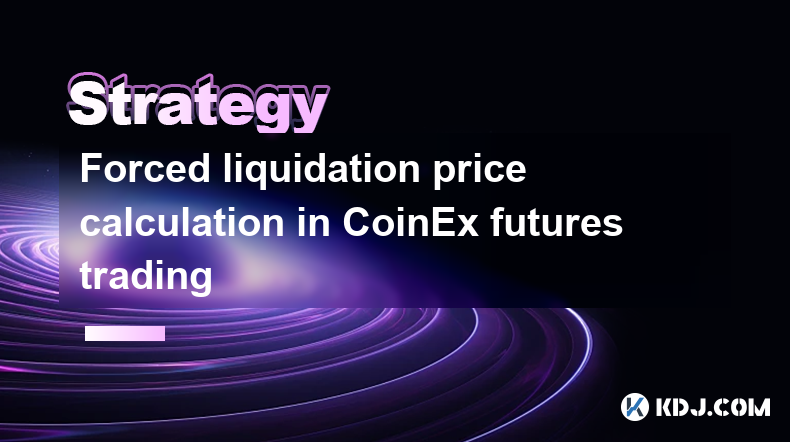
Forced liquidation price calculation in CoinEx futures trading
Apr 03,2025 at 05:35am
In CoinEx futures trading, understanding the forced liquidation price is crucial for managing risk and maintaining your positions. The forced liquidation price is the point at which your position is automatically closed to prevent further losses. This mechanism is designed to protect both the trader and the platform from negative account balances. The c...
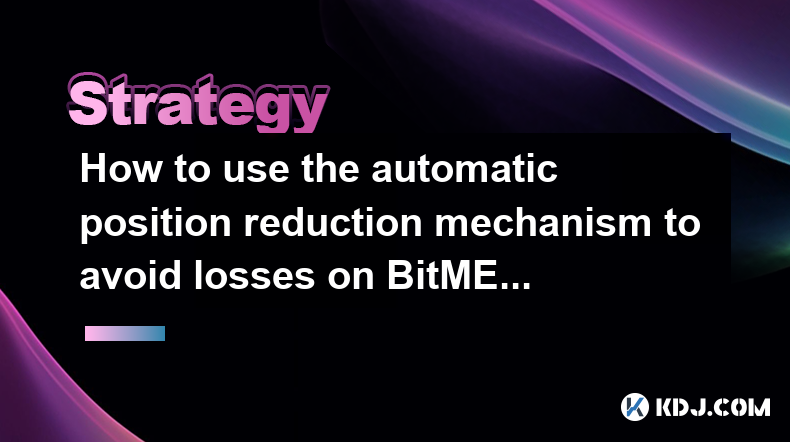
How to use the automatic position reduction mechanism to avoid losses on BitMEX
Apr 03,2025 at 02:56am
Using the automatic position reduction mechanism on BitMEX can be a strategic approach to managing risk and avoiding potential losses in the volatile cryptocurrency market. This feature, also known as Auto Deleveraging (ADL), is designed to help traders by automatically reducing their positions in certain conditions. To effectively use this mechanism, i...
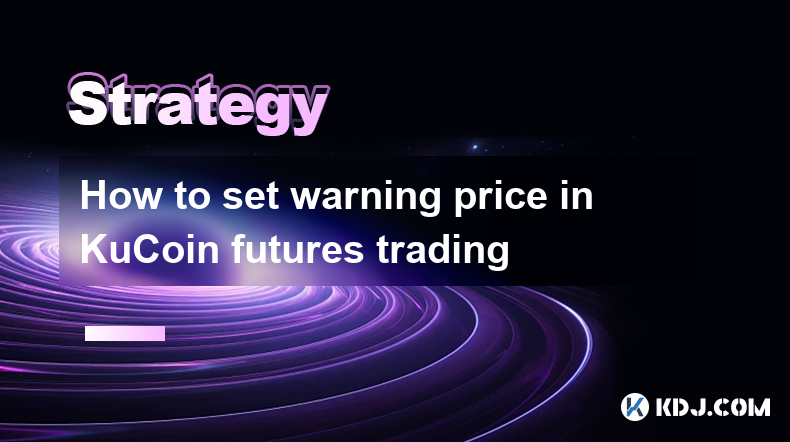
How to set warning price in KuCoin futures trading
Apr 03,2025 at 08:14am
Setting a warning price in KuCoin futures trading is an essential feature for managing risk and staying informed about market movements. This tool allows traders to receive notifications when the price of a futures contract reaches a specific level, helping them make timely decisions. To set a warning price, you need to navigate to the futures trading i...
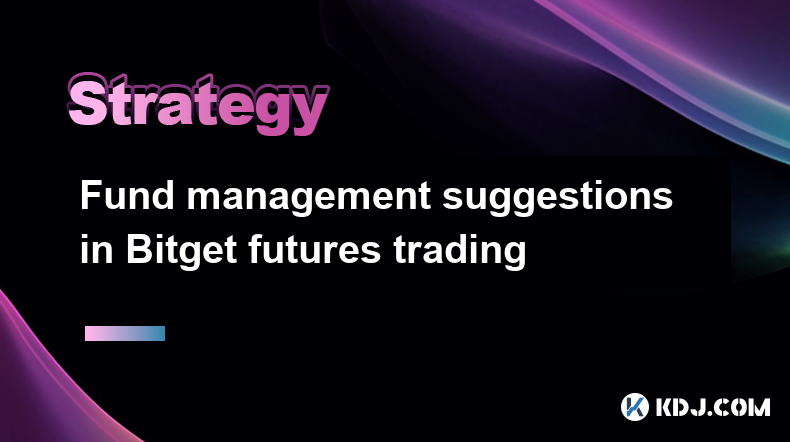
Fund management suggestions in Bitget futures trading
Apr 03,2025 at 09:28am
Trading futures on Bitget can be an exciting yet challenging endeavor. Effective fund management is crucial to maximize profits and minimize risks. This article will provide comprehensive suggestions on managing your funds while trading futures on Bitget. We will cover setting up a trading account, understanding leverage, implementing risk management st...
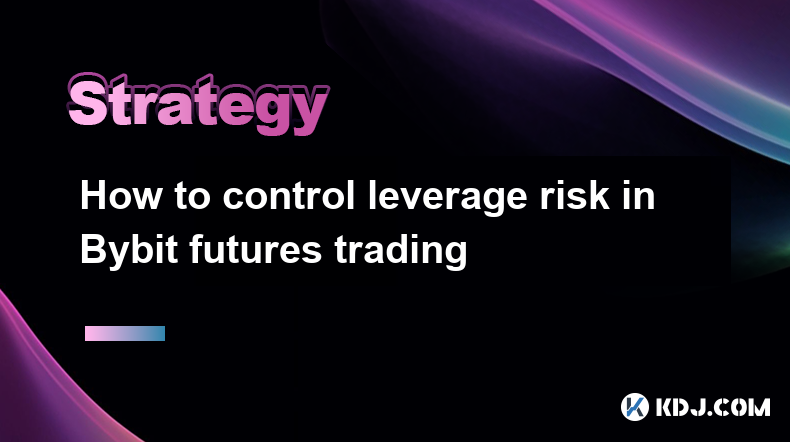
How to control leverage risk in Bybit futures trading
Apr 03,2025 at 04:36am
Trading futures on Bybit can be an exciting way to engage with the cryptocurrency market, but it comes with significant risks, particularly when using leverage. Leverage allows traders to amplify their exposure to the market, but it can also magnify losses. Understanding and controlling leverage risk is crucial for any trader looking to navigate the vol...
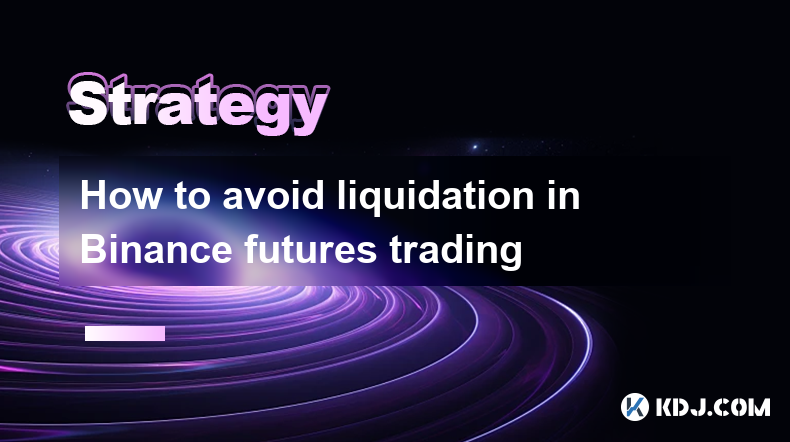
How to avoid liquidation in Binance futures trading
Apr 02,2025 at 10:28pm
Trading in Binance futures can be an exciting yet risky endeavor. One of the most significant risks traders face is liquidation, which occurs when the market moves against your position, and your account's margin balance falls below the maintenance margin requirement. To avoid liquidation, it's crucial to understand the mechanics of futures trading and ...

Forced liquidation price calculation in CoinEx futures trading
Apr 03,2025 at 05:35am
In CoinEx futures trading, understanding the forced liquidation price is crucial for managing risk and maintaining your positions. The forced liquidation price is the point at which your position is automatically closed to prevent further losses. This mechanism is designed to protect both the trader and the platform from negative account balances. The c...

How to use the automatic position reduction mechanism to avoid losses on BitMEX
Apr 03,2025 at 02:56am
Using the automatic position reduction mechanism on BitMEX can be a strategic approach to managing risk and avoiding potential losses in the volatile cryptocurrency market. This feature, also known as Auto Deleveraging (ADL), is designed to help traders by automatically reducing their positions in certain conditions. To effectively use this mechanism, i...

How to set warning price in KuCoin futures trading
Apr 03,2025 at 08:14am
Setting a warning price in KuCoin futures trading is an essential feature for managing risk and staying informed about market movements. This tool allows traders to receive notifications when the price of a futures contract reaches a specific level, helping them make timely decisions. To set a warning price, you need to navigate to the futures trading i...

Fund management suggestions in Bitget futures trading
Apr 03,2025 at 09:28am
Trading futures on Bitget can be an exciting yet challenging endeavor. Effective fund management is crucial to maximize profits and minimize risks. This article will provide comprehensive suggestions on managing your funds while trading futures on Bitget. We will cover setting up a trading account, understanding leverage, implementing risk management st...

How to control leverage risk in Bybit futures trading
Apr 03,2025 at 04:36am
Trading futures on Bybit can be an exciting way to engage with the cryptocurrency market, but it comes with significant risks, particularly when using leverage. Leverage allows traders to amplify their exposure to the market, but it can also magnify losses. Understanding and controlling leverage risk is crucial for any trader looking to navigate the vol...

How to avoid liquidation in Binance futures trading
Apr 02,2025 at 10:28pm
Trading in Binance futures can be an exciting yet risky endeavor. One of the most significant risks traders face is liquidation, which occurs when the market moves against your position, and your account's margin balance falls below the maintenance margin requirement. To avoid liquidation, it's crucial to understand the mechanics of futures trading and ...
See all articles
























































































